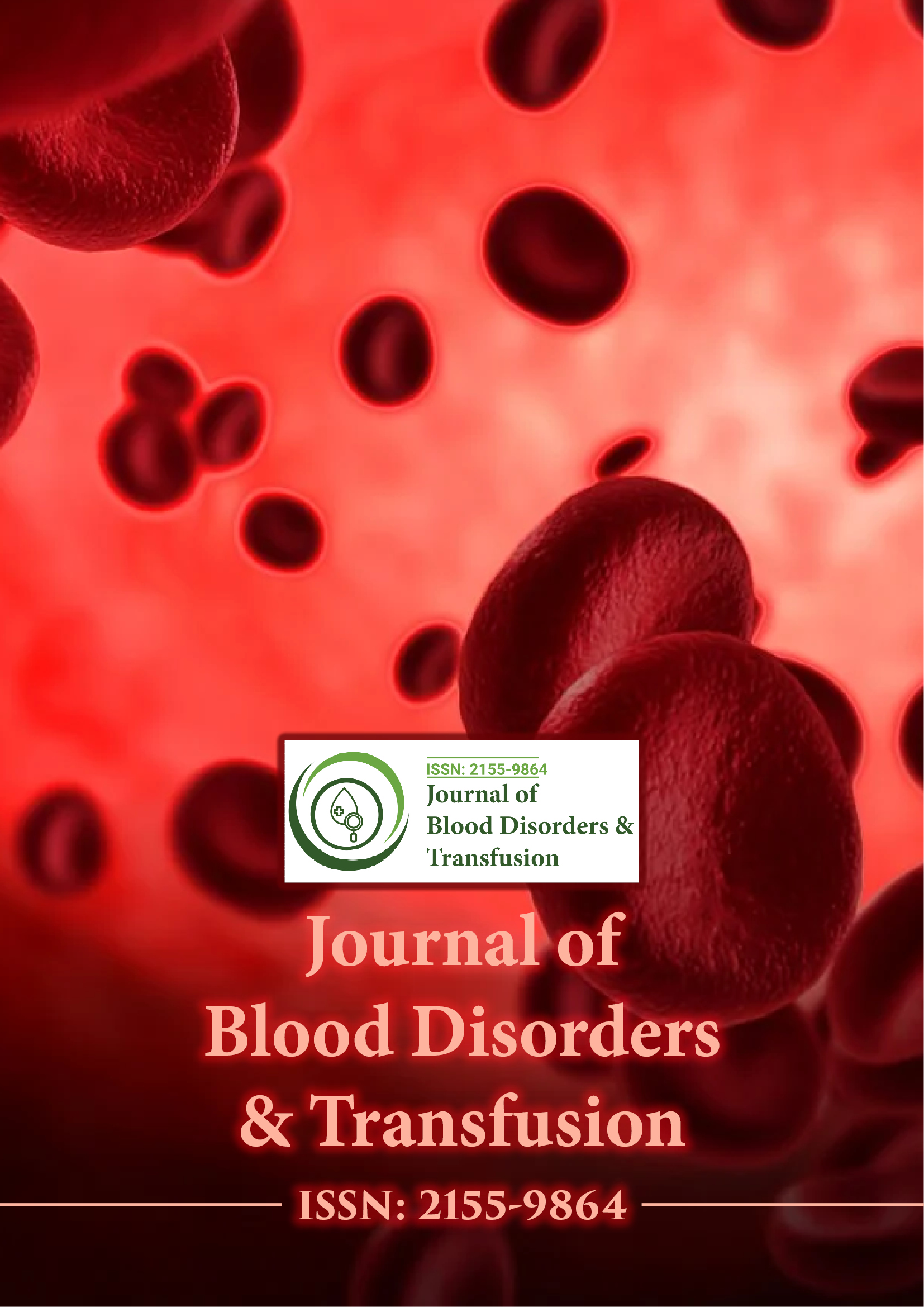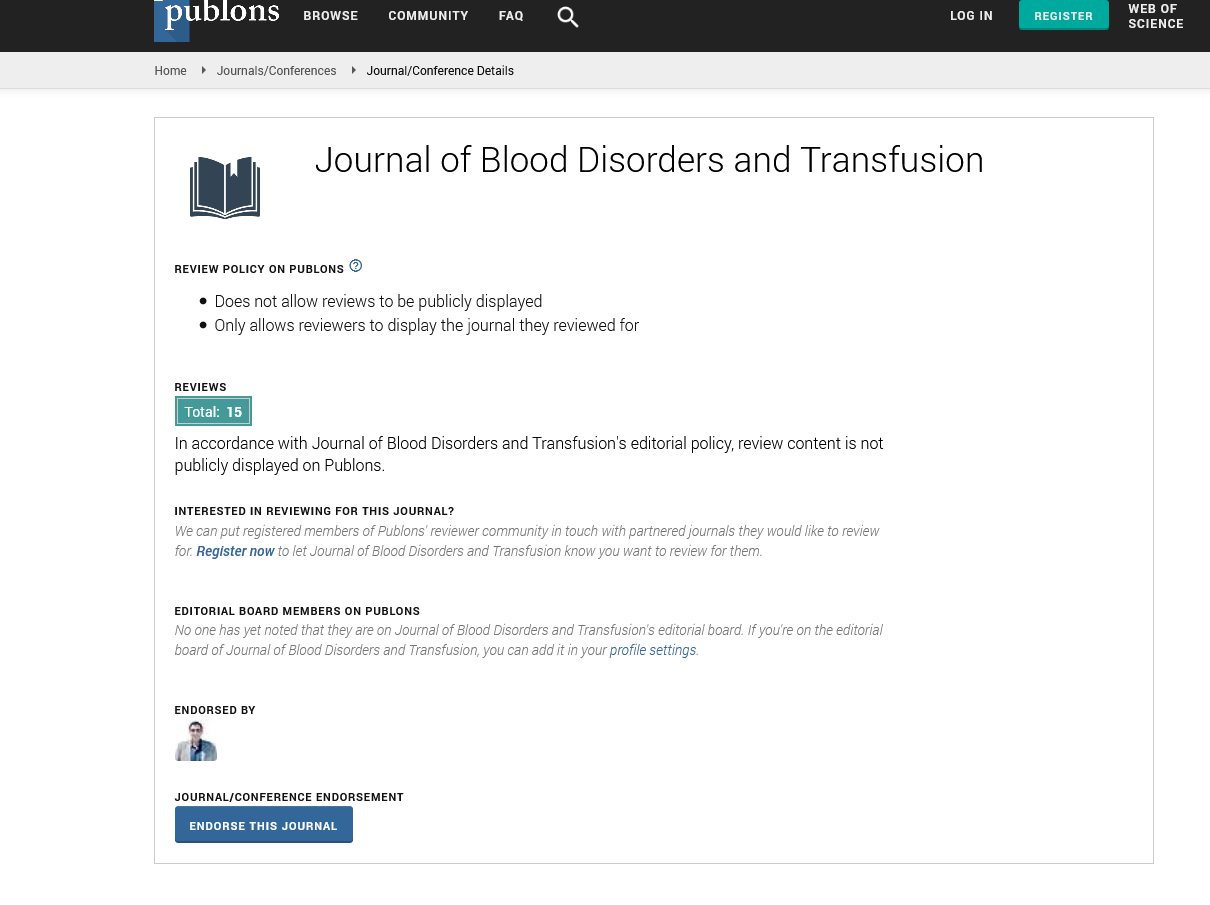Indexed In
- Open J Gate
- Genamics JournalSeek
- JournalTOCs
- Ulrich's Periodicals Directory
- RefSeek
- Hamdard University
- EBSCO A-Z
- OCLC- WorldCat
- Proquest Summons
- Publons
- Geneva Foundation for Medical Education and Research
- Euro Pub
- Google Scholar
Useful Links
Share This Page
Journal Flyer

Open Access Journals
- Agri and Aquaculture
- Biochemistry
- Bioinformatics & Systems Biology
- Business & Management
- Chemistry
- Clinical Sciences
- Engineering
- Food & Nutrition
- General Science
- Genetics & Molecular Biology
- Immunology & Microbiology
- Medical Sciences
- Neuroscience & Psychology
- Nursing & Health Care
- Pharmaceutical Sciences
Extended follow up of patients treated in the Rituximab as second-line treatment for adult immune thrombocytopenia - the RITP study
16th World Hematology Congress
March 18-19, 2019 | Rome, Italy
E Tjonnfjord, P A Holme, B Darne, A Khelif, A Waage and W Ghanima
Ostfold Hospital, Norway
Oslo University Hospital, Norway
Monitoring Force Paris, France
CHU Farhat Hached, Tunisia
St. Olavs Hospital, Norway
Institute of Clinical Medicine - Oslo University, Norway
Posters & Accepted Abstracts: Blood Disord Transfus
Abstract:
Introduction: Immune thrombocytopenia (ITP) is characterized by immune mediated destruction of platelets and
suboptimal production. RITP was a randomized placebo-controlled trial in which ITP patients who failed to achieve
adequate response to steroids were randomized to receive rituximab or placebo plus standards of care (Ghanima
et al. Lancet 2015; 385:1653-61). Study end points were treatment failure (splenectomy or meeting criteria for
splenectomy), response rates and duration of response with a follow-up of 18 months. Apart from longer duration of
response in the rituximab arm, the study showed no significant differences and the other outcomes.
Objective: To provide long-term rates of splenectomy, death and duration of response based on extended open
follow-up after completion of the RITP study.
Methods: Platelet counts, splenectomy status, ITP medication and death were retrospectively collected. Response was
defined as platelet count of >30X109/L or atleast a doubling of the platelet count from baseline without administration
of any platelet increasing therapy except stable or decreasing doses of prednisone or prednisolone during the past
4 weeks; or > 100X109/L for complete response (CR) after week 4 from first study drug administration. Relapse
was defined as platelet count <30X109/L or reinstitution of ITP medication. The study was approved by the ethics
committees in Norway and Tunisia.
Results: Extended follow-up data were acquired from 90 of 109 patients participating in RITP. Median duration
of follow-up from randomization to last observation was 72 months (IQR 62-82). Overall 35 patients underwent
splenectomy (13 in the rituximab; 22 in the placebo arm) with a trend towards longer time to splenectomy in the
rituximab arm (p=0.11) (figure 1). Eleven patients (10%) died during the extended followup: 5 in the rituximab and
6 in the placebo arms. Seventy-six of 109 patients achieved response (40 in the rituximab; 36 in the placebo arms)
including complete response (28 in the rituximab; 21 in the placebo arms) during the RITP study. Figure 2 shows
probability of first relapse in responding patients. Median duration of response was 8.2 (5.2-16.7) after response and
17 (8-34) months after CR, in the rituximab arm and 1.8 (1.3-3.7) and 11 (4.5- not reached) months respectively
in the placebo arm. Not statistically significant (p=0.09). During the extended follow-up, 2 more patients in the
rituximab arm relapsed after achieving response and 4 after achieving CR.
Conclusion: To our knowledge, the data provided here represent the longest single study follow-up reported on the
effect of rituximab in ITP. Although, rituximab seemed to yield longer duration of OR and CR, the effect was clearly
transient and the two curves cross after 34 months. Around 20% of patients in both arms are still responders at 6
years. Interestingly a trend towards lower splenectomy rate was found in rituximab treated patients. The retrospective
collection of data in the follow-up represents a limitation of this study. In the future, efforts should be made to
augment the initial response to rituximab and to prolong the duration of response, as our ongoing prolong study
(NCT03010202) will look at.
Recent Publications
1. PNH ??? Paroxystisc Nocturnal Haematoglobuinuri, Eirik Tjønnfjord, DSTH-forum no. 4, 2011.
2. Author of the Norwegian guidelines for diagnostics and treatment of PNH (Paroxystisc Nocturnal
Haematoglobuinuri).
3. NOTCH1 and SF3B1 mutations can be added to the hierarchical prognostic classification in chronic lymphocytic
leukemic. Mansouri L, Cahill N, Gunnarsson R, Smedby KE, Tjønnfjord E, Hjalgrim H, G Juliusson Geisler C
and R Rosenquist. Leukaemia 2013 February; 27(2):512-14.
4. Envenomation by the common European adder (Vipera berus); a case series of 219 patients. Eur J Emerg Med
2018 nov 12. Hermansen MN, Krug AH, Tjønnfjord E, Braband M
5. Prophylactic use of eculizumab during surgery in chronic cold agglutinin disease , Eirik Tjønnfjord, ??ystein
Vengen, Sigbjørn Berentsen and Geir Tjønnfjord. BMJ Case Reports, December 2016
6. Multiple Myeloma or MGUS ??? important to give the right diagnosis. Eirik Tjønnfjord, Bruno Bengtsson and
Claudia Stahlberg, BJSTR 2018.
Biography :
E Tjønnfjord took his Degree at Odense University Hospital, Denmark. He has worked in the field of hematology with a special interest in the benign hematology. He is now starting a PhD focusing on the treatment of ITP and how to improve it.
E-mail: eirik_tjo@hotmail.com

